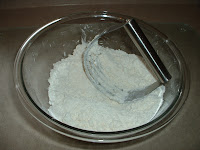
My father was born in Bari, a picturesque city situated on the Mediterranean coast of Italy.
He would often tell us many exciting tales of the deep sea fishing adventures he experienced during his younger days.
His love of fishing was only surpassed by the love for any kind of fish that would end up on his plate.
After immigrating to Canada you would think that his fishing days on the Mediterranean would become a distant memory. On the contrary, several years later he became very good friends with the owner of a fish market. There he spent countless hours helping out just for the love of it.
Because of this connection with the owner there was always an abundance of many varieties of fish and shellfish on our dinner table.
My father always knew the best way to prepare every kind of fish he brought home and my mother was always ready to cook it up.
During that time we were witness to some pretty strange looking creatures from the deep.
Octopus, squid, shark and skate were only a few varieties we enjoyed not to mention razor clams, conch and sea urchins that made dinner time very interesting.
We have enjoyed many of these dishes in my own family throughout the years. No written recipes for these either. The ingredients and method of preparation were just ingrained into us by watching, listening and enjoying.
The next few posts are dedicated to my father who introduced us, taught us how to prepare and encouraged us to enjoy all that the sea has to offer.
The following recipe for Shrimp Fried Rice is definitely not one that we enjoyed while growing up.
I found this simple recipe in a rather large cook book titled The New World Encyclopedia of Cooking, a fitting title as I entered the ”new world” of being responsible for the daily preparation of dinner. During my newly married years this recipe was one of my first attempts at cooking fish.
The recipe looked simple enough to try out and has become another “tested and true” recipe that I have turned to for many years.
As the years have gone by I've become more adventurous in preparing some of the fish dishes that I enjoyed while living at home.
Shrimp Fried Rice
½ cup long grain rice
1 pound fresh or frozen shrimp
½ cup chopped onion
4 tablespoons corn or peanut oil
2 to 3 tablespoons soy sauce
freshly ground black pepper to taste
thinly sliced scallions or chives for garnish (optional)
- Cook rice until tender, drain and refrigerate (chilling prevents rice from sticking to skillet during frying process.)
- Clean, devein if necessary and cut shrimp into pieces.
- In a heavy 10 inch skillet heat oil and add chopped onion, sauté until slightly softened.
- Add shrimp and cook about 2 minutes until barely cooked (don’t overcook.)
- Mix in the chilled rice and soy sauce, add pepper.
- Cook over low heat for about 5 minutes stirring occasionally with a fork to keep rice kernels intact.
- Makes 2 to 3 servings.
Notes, Tips and Suggestions
- I have made this recipe without soy sauce and it was just as good. If you omit the soy sauce remember to add salt to taste and a couple of tablespoons water to keep the rice moist.
- Size 21 to 25 shrimp per pound work well cutting each shrimp into 3 pieces. If you use smaller size shrimp no need to cut them up.
- My favourite variety of shrimp are the frozen zipper back Black Tiger. These are very tasty and have already been deveined. Just defrost in slightly salted cold water, peel and cut up.
- Rice can be cooked earlier on in the day since it will be refrigerated before use.
- Recipe can be doubled or tripled to feed a larger crowd.











































